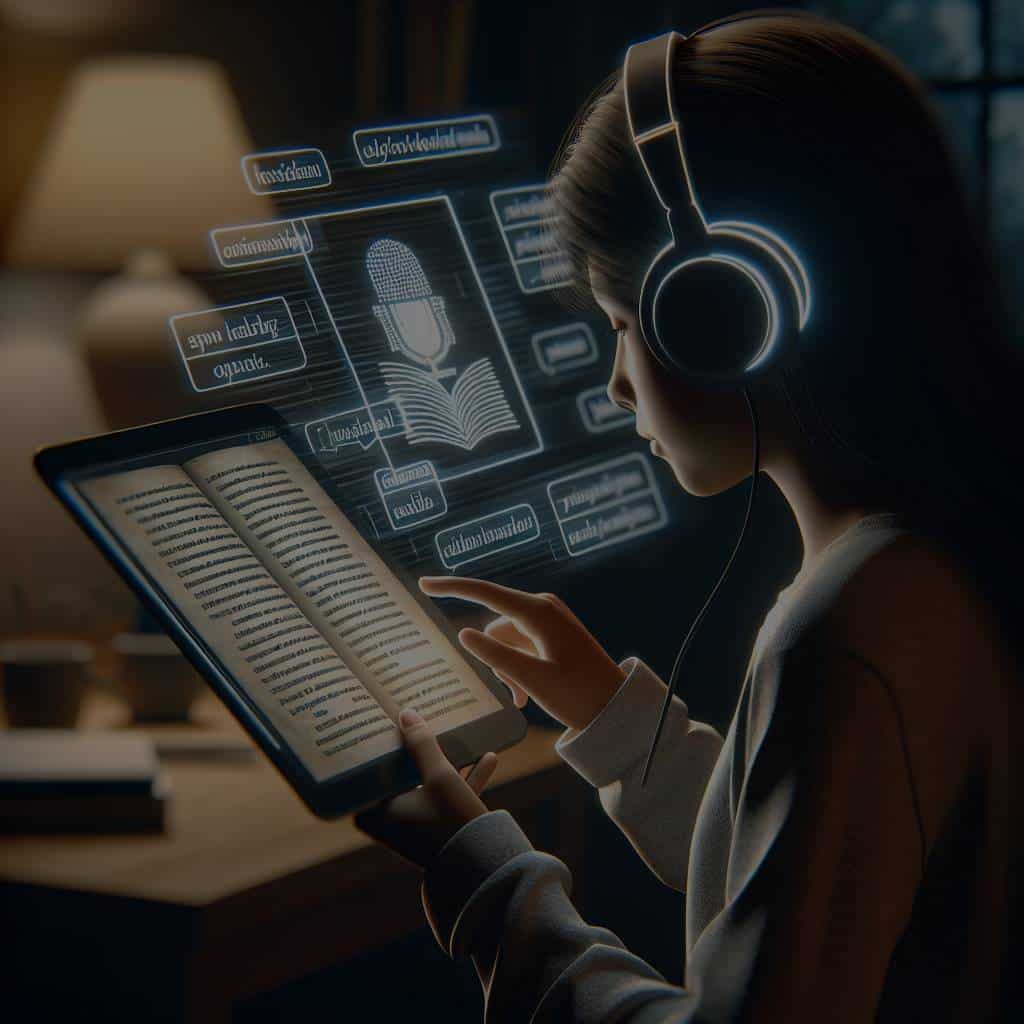What’s the Latest in Text-to-Speech Technology for Assisting Dyslexic Readers?

The advent of technology has revolutionized our learning experiences. One such manifestation of technology is the Text-to-Speech (TTS) software that has been a game-changer for many. This tool has particularly been significant in improving the reading experience for students who face learning challenges such as dyslexia. This article aims to discuss the latest advancements in TTS technology and its impact on assisting dyslexic readers.
The Emergence of TTS Technology: A Brief Overview
Text-to-speech technology, often abbreviated as TTS, is a form of assistive software that converts digital text into spoken voice output. This technology has been instrumental in facilitating the learning process for individuals with learning disabilities or those who struggle with reading.
A voir aussi : How Can Peer-to-Peer Energy Trading Transform the Renewable Energy Market?
TTS technology transcends the traditional barriers of learning and offers an alternative method of content absorption. It allows students to listen to written text aloud, thereby improving their comprehension, retaining ability, and boosting confidence.
With the emergence of TTS technology, students are no longer dependent on others for reading assistance. The software enables them to leverage their auditory abilities, providing them with an enhanced, independent learning experience.
A voir aussi : How Can Phytoremediation Be Utilized for Industrial Land Reclamation?
While it is beneficial to virtually all students, TTS technology holds particular significance for those with dyslexia. It supplements traditional teaching methods, offering alternative learning avenues to address dyslexia’s unique challenges.
TTS Technology and Dyslexia: A Connection Worth Exploring
Dyslexia, a learning disorder, hampers a person’s ability to read, spell, and sometimes even speak. For dyslexic students, conventional reading methods prove to be inadequate and often daunting, leading to a compromised learning experience.
The integration of TTS technology in their learning regime can help dyslexic students overcome their reading hurdles. By converting text into speech, it allows these students to listen to the content, thereby bypassing the decoding process that dyslexics often struggle with. While listening, they can focus on understanding and comprehending the information, rather than battling with word recognition or spelling.
Moreover, TTS technology offers a multisensory learning experience. As students listen to the text, they can follow the words on the screen, facilitating a connection between visual and auditory learning channels. This multisensory approach can significantly enhance their comprehension and retention abilities.
The Evolution of TTS Technology: How It’s Changing the Game
In recent years, TTS technology has seen an unprecedented growth and evolution. The introduction of Artificial Intelligence (AI) and machine learning technologies has propelled the software’s capabilities to a whole new level.
Today’s TTS technology can emulate natural human voice, inflection, and tone, providing a more seamless and relatable listening experience. The software can also read aloud web content, ebooks, and digital documents, offering a wide spectrum of learning materials to the users.
In addition to the improved voice quality, modern TTS tools also offer customizable features. Users can adjust the speech speed, choose from multiple voice options, and even select specific languages or accents. These features allow users to tailor their learning experience according to their preferences and needs.
The Latest in TTS Technology: What to Expect in December 2024
As we approach the end of 2024, TTS technology is expected to become more sophisticated and user-friendly. The developers are continually working towards enhancing the software’s capabilities and addressing the existing limitations.
One of the most anticipated advancements is the introduction of emotion recognition in TTS technology. This feature will enable the software to recognize and replicate the emotional tone of the text, making the listening experience more engaging and meaningful.
Moreover, developers are also focusing on improving the software’s language recognition capabilities. Newer versions of TTS tools are expected to support a broader range of languages and dialects, further democratizing the technology.
In conclusion, the advent of TTS technology has revolutionized the learning experience for dyslexic students. Looking ahead, the continuous advancements in this field promise an even more inclusive and effective learning environment for everyone. The future of TTS technology holds immense potential, and it is thrilling to witness how these innovations will transform our learning experiences.
TTS Tools: A Ray of Hope for Dyslexic Individuals
The Text-to-Speech technology (TTS), an integral part of the assistive technology, has been a boon for people with learning disabilities, particularly for those affected by dyslexia. It has transformed their reading experience, making it more accessible and less challenging.
Among the various speech tools available today, TTS technology has been a standout. It has opened a window of opportunity for dyslexic individuals, who had previously struggled with traditional reading and writing methods. Now, they can listen to text being read aloud by the software, allowing them to absorb information with less strain.
Moreover, many TTS tools are integrating word prediction technology. This feature anticipates and suggests the next word the user might type, reducing the time and effort required for typing. It is particularly beneficial for dyslexic individuals, as it minimizes spelling errors and helps speed up their writing process.
Some popular platforms like Google Docs have incorporated TTS features, making it even more accessible. Users can simply select the text and activate the "Speak" function, and the software will read aloud the text. Thus, this advancement in speech technology has been instrumental in creating an inclusive environment, enabling people with dyslexia to participate more actively in learning activities.
The Future of TTS: What’s in Store for December 2024?
As December 2024 approaches, there is growing anticipation about the next advancements in TTS technology. The future promises to bring more refined and user-friendly features that are expected to further enhance the reading experience of dyslexic individuals.
One of the most anticipated features is the emotion recognition. With this, the TTS tools will be able to identify and reproduce the emotional tone of the text, making the listening experience more immersive and realistic. This could be a significant step towards making TTS sound more like human speech, rather than the monotonous computer-generated voice that has been a drawback of earlier speech software.
In addition, the software developers are working on improving the language recognition capabilities of TTS tools. The aim is to support a wider range of languages and dialects, making the technology more globally accessible. This would be a significant stride forward, considering the diversity of individuals with dyslexia around the world.
Conclusion: The Dawn of a New Era in Learning
The integration of TTS technology into our learning systems has revolutionized the learning experience for people with dyslexia. These advancements have not only alleviated the challenges faced by them but also enhanced their learning capabilities.
As the December 2024 approaches, we can look forward to more sophisticated features that promise to make the TTS technology more dynamic and user-friendly. These include emotion recognition and broader language support, which are set to further transform the learning experience.
While these advancements are promising, it’s also crucial to remember that TTS technology is merely a tool and not a cure for dyslexia. It’s a stepping stone towards a more inclusive and accessible learning environment. But the real game-changer will be the continued efforts towards understanding and acceptance of individuals with dyslexia in our society.
In the end, the aim should be not just to create assistive tools, but to foster a learning environment where everyone, regardless of their learning disabilities, is given an equal opportunity to thrive. With the continuous evolution of TTS technology, we are certainly heading in the right direction.
